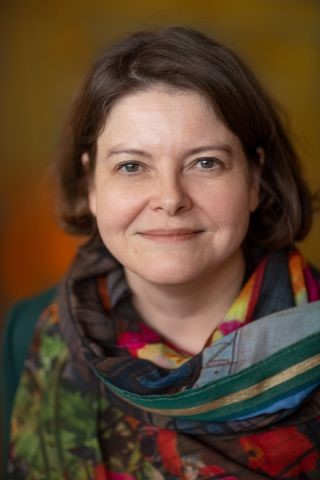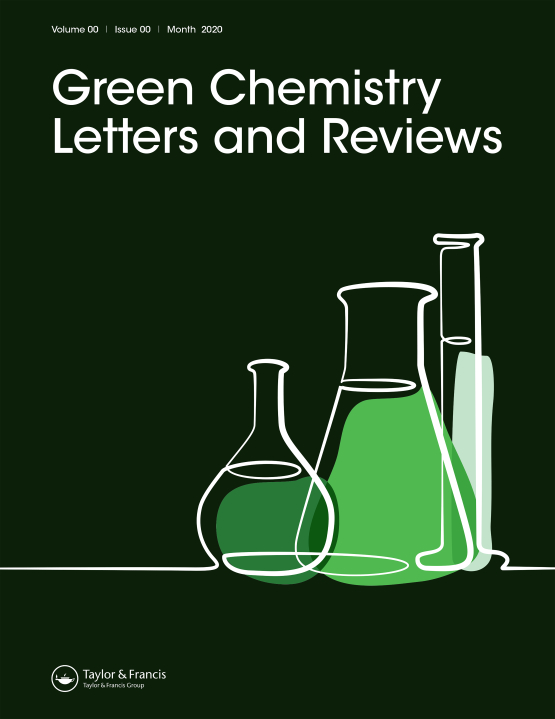A Q&A with Anja-Verena Mudring
Editor-in-Chief of Green Chemistry Letters and Reviews

Meet the Editor-in-Chief
In July 2020 Prof. Anja-Verena Mudring (AVM) took over as Editor-in-Chief of Green Chemistry Letters and Reviews. She currently heads the Intelligent Materials Group at the Department of Chemistry and iNANO, the interdisciplinary nanoscience center, at Aarhus University, Denmark. AVM is also an Honorary Professor at the University of KwaZulu Natal, College of Agriculture, Engineering, and Science in Pietermartizburg, South Africa. Visiting professorships have taken her to Wrocław, Poland; Orléans, France; and Genova, Italy.
Prof. Mudring studied Chemistry at the Friedrich-Wilhelms Universität in Bonn, Germany. She carried out her doctoral thesis work at the Max-Planck Institute for Solid State Research in Stuttgart, Germany. She worked as a postdoctoral fellow at the U.S. Department of Energy (DOE) Ames Laboratory before starting her independent scientific career at the Universität zu Köln in Cologne, Germany. She became Chair of Inorganic Chemistry at the Ruhr-Universität Bochum in Germany before moving back to the U.S. to join as Glen Murphy Professor at Iowa State University and to work with the Critical Materials Institute (U.S. DOE Ames Laboratory) to build a research program on green chemistry approaches to mitigate the critical materials crisis. She is the Founding Director of SUCeSS, the Stockholm University Center for Circular Systems, where she also headed the Physical Materials Chemistry Group in the Department of Materials and Environmental Chemistry. She has received numerous awards and fellowships, among them the Göran Gustafsson prize by the Royal Swedish Academy of Science conferred by the Swedish King Carl XVI Gustav. She has authored about 300 peer-reviewed publications.
What do you think are the current challenges facing the green chemistry research community?
Research activities and recognition in the field of Green Chemistry is increasing steeply around the Globe. It is important to market the journal as an appropriate, high-quality dissemination platform. There is an increasing number of competing journals.
Which topics are you most interested to cover in the journal?
All areas related to Green Chemistry.
Currently, organic chemistry is relatively well covered; the next step would be to reach out to inorganic and materials chemists.
Education is an important aspect; GCRL is the only journal in the area that is a platform for this
As the new Editor for Green Chemistry, what are your plans for the next year?
Getting new Associate Editors on board that reflect thematic, geographic, and gender diversity and help to attract high-quality submission around the world
Restructuring the Editorial Advisory Board to also reflect thematic, geographic, and gender diversity and help to attract high-quality submission around the world
Develop initiatives to make the journal more known and visible in the community; Jamie Ferguson has been hired to promote the journal on social me
Special virtual issues – a thematic collection of old papers with a new editorial/perspective article
A young investigator issue
A “Women in Green Chemistry” special issue
A recent report by the Royal Society of Chemistry found evidence of gender bias by journal editors and reviewers has been putting women at a disadvantage. What are your thoughts on the current state of diversity in green chemistry?
I am aware of the study. Being a female chemist myself, I am aware of the challenges. I am trying to increase the diversity by adding more women to the journal’s editorial board. I also would suggest running a “Women in Green Chemistry” special issue.
What would your advice be to women seeking an academic career in the field of chemistry?
Be self-confident and go your way!
How do you see open access publication shaping research?
Open access publications make it easier for researchers (and the public) across the world to get access to current research results which leads to a faster advancement of science and strengthening of science and research in economically poorer countries/institutions.
As a prospective author, what are the benefits of publishing in an open access journal like Green Chemistry?
I would see the benefits in a fast dissemination of my research results. A good way to draw attention to my research, which will help to get in touch with other researchers in the field, get cited and lay the foundation for further research funding.
What support can you give green chemistry authors and researchers who are hoping to publish in your journal?
I would consider a well-structured and informative journal website important. I would also suggest listing the editors and editorial board with photos and short bios to give the journal a more approachable face. Click through to see our own editorial board listing and biographies.
Feeling inspired?
If you’re feeling inspired to publish your research in OncoImmunology, click on the options below to find out more.
